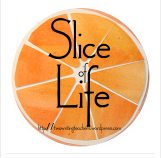The first student to arrive had her earbuds in, but the volume was low enough for her to hear my question: “What happened to you during the tornado?” Without hesitating, she took her earbuds out and started talking.
She was still talking when the next student came in. I was listening while writing advance organizers on the board. Soon, the second student started sharing her stories from the chaotic weekend. “It was really scary!” As I watched the energy between the two girls, I went back to the top of the plan for the day and put a question mark next to the first planned activity, “Read.”
The next students arrived as a group, found seats around the circle and joined right in. “My mother saw it from her window!”
“We didn’t have power for TWO DAYS!”
“Everyone saw that video!”
By the time the last student arrived, wheeling his chair up to the spot we save for him, we were deep in conversation. My students, sometimes reluctant to discuss anything, were sharing story after story. After a few minutes of free-for-all, someone suggested we should make sure to hear from everyone. Around the circle we went. Next I asked them to share something hard or not-so-good that happened. Finally, I asked about things that were unexpectedly good as a result of the tornado.
Our class was lucky: neither of the two tornadoes that touched down in Ottawa on Friday caused serious harm to them or their families. Nevertheless, one of electrical substations that provides power to Ottawa sustained a direct hit, so the whole city has been affected in one way or another. We were even off of school yesterday, the first time school has been cancelled in the 11 years I’ve taught here. We were close enough to danger to heighten the students’ attention but no one had experienced trauma, and I took total advantage of it.
Our class has been reading news stories daily as a way to increase the context we have for reading in general. We talk about the stories and study how they are written. We gather vocabulary words and learn how to ask questions. Slowly, we’re learning to write news articles. We’ve got a list of what makes something a news article, and that has become our success criteria. This unit takes a few weeks, but it’s worth it. My students will need this exact skill for standardized testing this year, and writing the news helps them understand perspective taking, narrative voice and sticking to one story. Some will even begin to take audience into account as they write, which is always fun.
Today, we talked about how the story of the tornadoes unfolded in the news, from the first emergency alert to the discussion of the aftermath (new vocab word!) in today’s paper. We looked at some pictures and thought about why the papers might have chosen to publish these images and whether or not they reflected our experience. Finally, everyone chose an image and wrote a news story about the tornadoes.
The students were completely engaged – success criteria in front of them (oh, how I love those lists!), pencils moving, keys tapping. Some bit their lips as they thought, two asked each other to check something, and most wrote until I stopped them… with just enough time left in class to reveal the shocking follow-up on a story we’ve been following. (The police arrested a second woman!) When the bell rang, we were all pretty energized.
I left the classroom musing about what made this day work so well. We never did get to our 20 minutes of reading – and I’m usually pretty insistent on that – but giving the students time and space to talk, think, and write about the thing that was actually on their mind made today’s class stand out.
These kids have things to say. Today is a reminder that my job is to help them say it.
